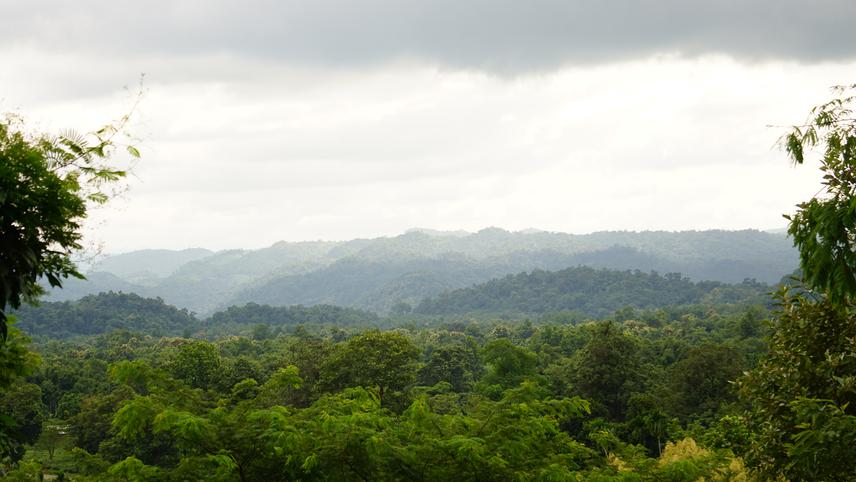Dhritimoni Goswami
Loharghat and Thaiñ Mawdem Forest Ranges fall under the Indo-Burma Biodiversity Hotspot. Chandubi, a tectonic wetland in the region, is also an important asset to it. Despite being designated as an Important Bird Area by Birdlife International and a Key Biodiversity Area by the IUCN, the area remains unexplored. Our preliminary study on this site indicated a stronghold of rich biodiversity and diverse forest habitats.
The local communities are proactive in protecting their forests, but the forests and their biodiversity are threatened by various developmental activities such as roads and illicit logging. As per our preliminary survey so far 6 families and 1 male of western hoolock gibbon, which is an endangered primate, inhabits these forests. In India, it is listed on Schedule 1 of the Wildlife (Protection) Act, 1972.

Loharghat Forest range.
The presence of hoolock gibbons indicates a healthy forest ecosystem as they need a contiguous forest canopy for their survival. But these slow-entering threats in the region can become rapid in no time and forfeit the ecological soundness as well as the rich floral and faunal diversity. Besides hoolock gibbon, the region also supports many threatened species. So, protecting the hoolock gibbon will ensure the conservation of other species as well.
Objectives:
1. In-depth exploration of the biodiversity of Loharghat and Thaiñ Mawdem Forest Ranges through ecological and social perspectives.
2. Capacity building of local people to contribute to basic scientific research and enhance communication between local and scientific communities and foster conservation awareness among different stakeholders.
3. To conduct outreach programmes to raise awareness of hoolock gibbon and hold discussions and workshops with key stakeholders to generate enthusiasm and engagement to represent conservation needs.